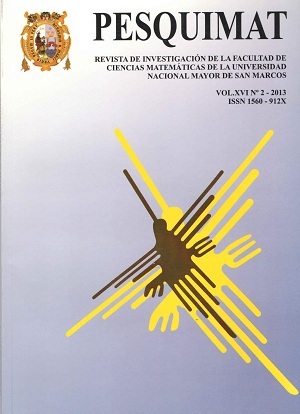COMPARATIVE STUDY OF SOCIAL SKILLS COLLEGE STUDENTS OF THE FACULTY OF MATHEMATICS USING MULTIVARIATE METHOD
DOI:
https://doi.org/10.15381/pes.v16i2.12169Keywords:
T2 of Hotelling, Factorial Analysis, Social Skills Stratified Sampling, Size of sampleAbstract
In the present research make a comparison of academic social skills on students enrolled in the Faculty of Mathematics (FCM) at the National University of San Marcos by sex, using the measuring instrument of Social Skills Scale Goldstein and multivariate methods, including Hotelling T2 statistic. and factor analysis (Johnson and Wichern, 1992), to analyze the data collected. In the sample design, stratified random sampling (Scheffer and Mendenhall, 2007) with proportional allocation to size in each stratum considered as strata to Professional Academics Schools (E.A.P.) of Faculty of Mathematics Sciences. To calculate the sample size used stratified random sampling with a limit for the estimation error of 2,2 and and the information provided by the Academic Board of the Faculty of Mathematics, of students enrolled the second semester of academic year 2009, the sample size was 301 students, divided in proportion to the four Professional Academics Schools of the Faculty of Mathematics.Downloads
Published
Issue
Section
License
Copyright (c) 2013 Oscar Kuroiwa Quispe, Olga Lidia Solano Dávila

This work is licensed under a Creative Commons Attribution-NonCommercial-ShareAlike 4.0 International License.
THE AUTHORS RETAIN THEIR RIGHTS:
a) The authors retain their trademark and patent rights, and also on any process or procedure described in the article.
b) The authors retain the right to share, copy, distribute, execute and publicly communicate the article published in Pesquimat magazine (for example, place it in an institutional repository or publish it in a book), with recognition of its initial publication in the Pesquimat magazine.
c) The authors retain the right to make a later publication of their work, to use the article or any part of it (for example: a compilation of their works, notes for conferences, thesis, or for a book), provided that they indicate the source of publication (authors of the work, magazine, volume, number and date).













